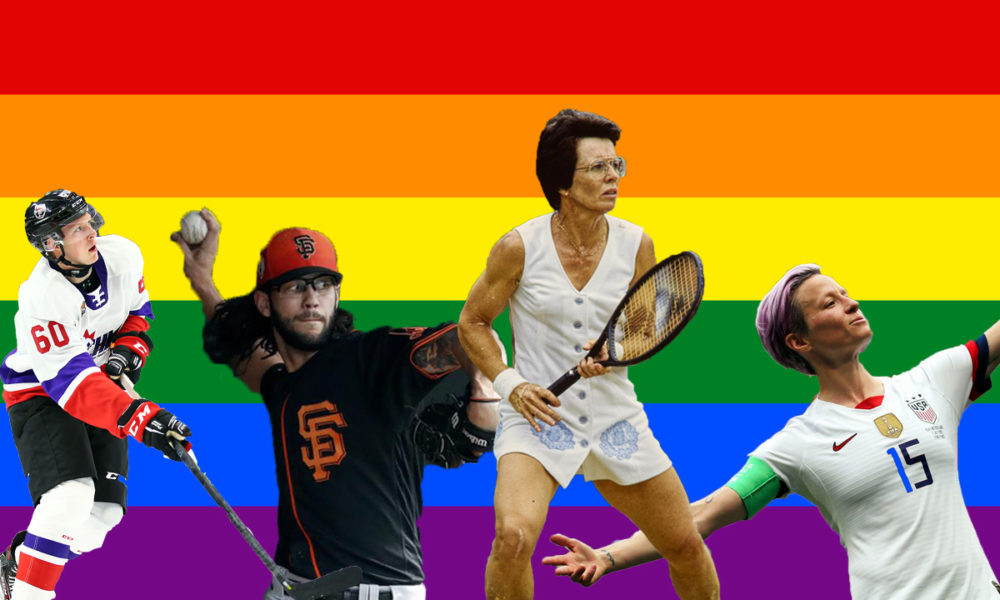When star tennis player Billie Jean King was outed by her former lover Marilyn Barnett in the spring of 1981, King’s lawyer and press representative advised her to deny the truth. They feared that King being outed as a lesbian would harm her reputation, and issued a statement of denial; a statement which, according to King in her autobiography, “Billie Jean,” was issued without her consultation.
Only 48 hours after being outed, King decided to go against her lawyer’s wishes and held a press conference admitting to her relationship with Barnett.
“I said ‘I’m going to do it. I don’t care. This is important to me to tell the truth,’” King said in an interview with NBC News in 2017. “The one thing my mother always said, ‘To thine own self be true.’”
King had become of of the first prominent athletes to come out as gay. While she had many supporters on her side, King lost all of her endorsements in 24 hours. She didn’t know it at the time, but she was helping pave the way for hundreds
“I don’t want others to go through what I did,” King said. “Unless somebody’s ready, they shouldn’t be outed.”
King’s global reception in 1981 stands in stark contrast to athletes who publicly come out in 2021. More and more athletes feel comfortable being openly part of the LGBTQ+ community.
In a recent study published by Outsports called “Out In Sports Study: Out LGBTQ athletes report deep, widespread acceptance from teammates” by Cyd Zeigler and Jim Buzinski, the University of Winchester and the Sports Equality Foundation found that more than 95% of the athletes surveyed said their teammates’ responses to them coming out were overall “neutral” to “perfect.”
“I don’t think I could have experienced a better response for what I needed,” Kentucky Wesleyan College men’s soccer goalie, Thomas Roth, said to Outsports about coming out to his teammates in 2018. “They couldn’t have done any better. Camaraderie was always part of my team experience, and nothing about that changed at all.”
The widespread acceptance proves that there is much less discrimination today towards LGBTQ+ athletes than there was 40 years ago. This has allowed a record number of athletes to publicly come out.
At this year’s Tokyo Olympics, there were at least 185 publicly out gay, lesbian, bisexual, transgender, queer and nonbinary athletes, which is triple the number of who participated at the 2016 Rio Games, according to Outsports.
This increase in publicly out athletes is indicative of society’s growing acceptance of the LGBTQ+ community. Younger athletes who are nervous about coming out can now look up to many successful athletes and feel connected to them.
While so many athletes feel comfortable publicly coming out, there is still a lot of progress to be made in men’s sports. Of the 185 publicly out athletes, women outnumbered the men by about nine to one margin, according to Outsports.
“Being able to compete with the best in the world as my most authentic self at the biggest international multi-sport games shows how far we’ve come on inclusion in sport,” Canadian swimmer Markus Thormeyer said in an interview with Outsports. “I’m hoping that by competing at these games I can show the LGBTQ+ community that we do belong and we can achieve anything we put our minds to.”
In July 2021, Nashville Predators prospect Luke Prokop came out as gay in an Instagram post, becoming the first active player under an NHL contract to ever publicly acknowledge their sexuality. According to Outsports, Prokop’s coming out marks the first time a publicly out athlete from North America will play professionally in one of America’s big five men’s sports: baseball, basketball, football, hockey and soccer in the same year.
Cheryl Cooky, a professor of American Studies and Women’s, Gender, and Sexuality Studies at Purdue University believes the reason women athletes are more likely to come out than men athletes is because of key differences between the two cultures.
“For women, historically participating in sport has meant challenging gendered expectations and gendered norms and behaviors,” Cookey said in an interview with NPR. “Whereas for men, participating in sport is demonstrating and reaffirming and embodying all of those characteristics we expect of men.”
Male athletes might fear retribution by fans and teammates if they come out. Professional men’s sports have always been dubbed the “last closet” due to its hypermasculinity and lack of LGBTQ+ representation.
Even with a publicly out athlete in the big five sports, Cookey is not convinced that every male athlete will feel comfortable coming out publicly.
“It might be more of a trickle than an opening of the floodgates,” Cookey said.
The most recent pro athlete to publicly come out is MLB prospect, Kieran Lovegrove, who came out as bisexual in an interview with ESPN in September. Lovegrove joins Bryan Ruby as the only two publicly out LGBTQ+ players in professional baseball.
“Baseball is a game of statistics,” Lovegrove told ESPN. “And if you want to tell me that I’m the only queer person in baseball, I’m just not going to agree with you.”
Since there is less pressure to hide one’s sexuality, today’s athletes do not face the same adversity as King once did. King, now a gay rights activist, founded the Women’s Sports Foundation to fight for women’s rights and LGBTQ+ rights.
Although there is more progress to be made, today’s LGBTQ+ athletes enjoy a level of acceptance made possible by trailblazers in the sports world, who have shown the world it is ok to be yourself.




